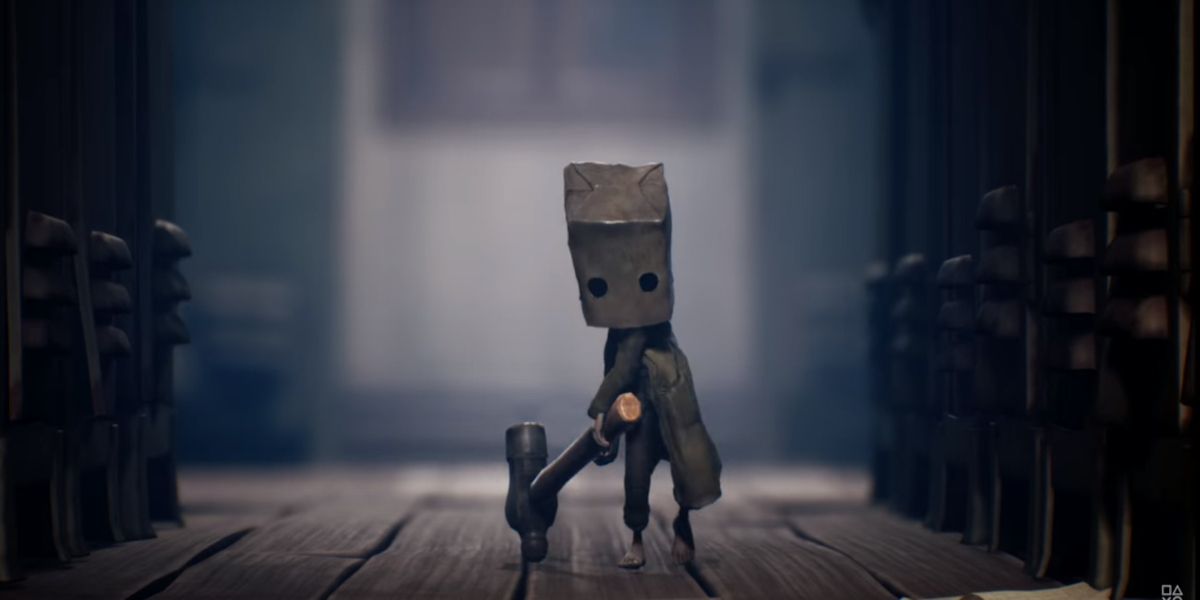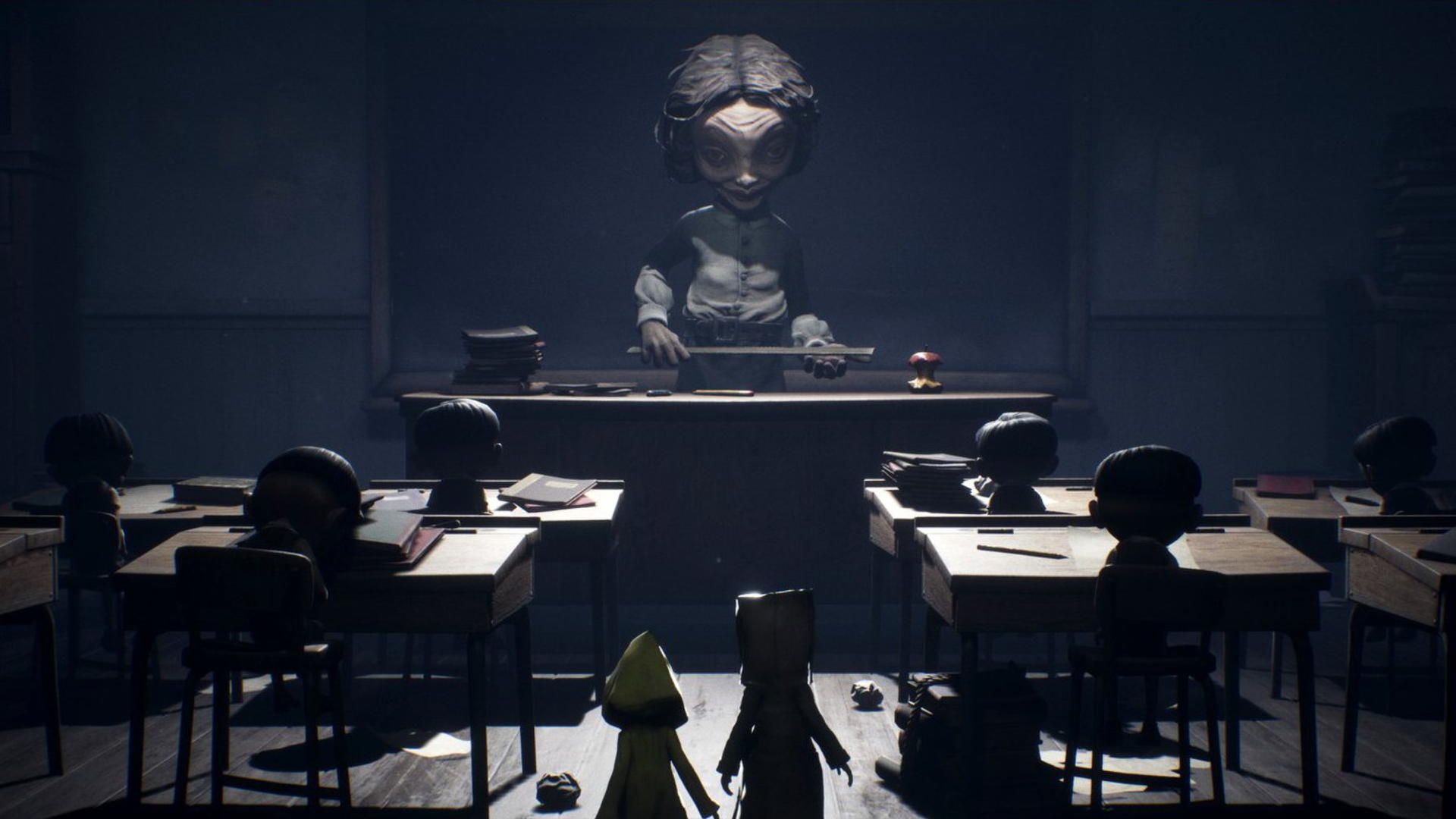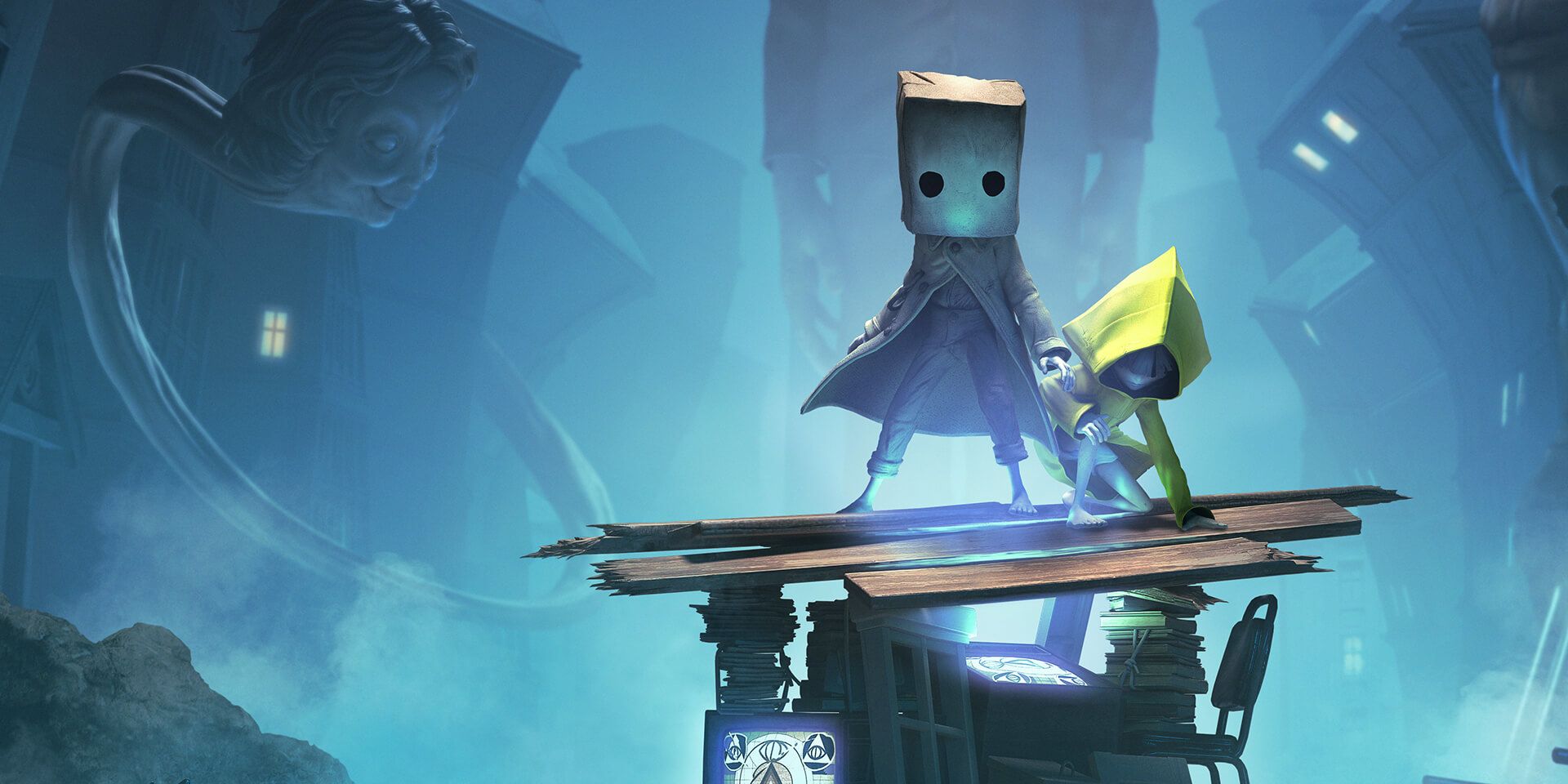Spoilers for Little Nightmares and Little Nightmares II follow.
In my review of Little Nightmares II, I praised the follow-ups ability to maintain its incredible and grotesque art style, sense of narrative tension, and downright creepy vibes. Sure, some of the clunky mechanics that plagued the previous game still exist in the new release, and sure, the thematic throughline of the new game isn't quite as strong as the insatiable hunger that pervaded the original, but overall, Little Nightmares II is a must-play game in a must-play franchise. And now I get to talk about why as we discuss that literal cliffhanger of an ending and whether or not Little Nightmares II is a sequel, a prequel, or something else entirely. Again, spoilers follow.
The beginning of Little Nightmares II introduces you to Mono, the player character who has a penchant for wearing oversized hats on his head and boasts the ability to wield heavy objects like hammers, axes, and pipes. But another ability is present from the beginning, the player just doesn't know about it. We meet Mono in the middle of a forest clearing on the outskirts of the Pale City, an area inhabited by a deadly Hunter and separated from the perils of that urban decay by a waterway. And we find Mono sitting beside a powered-down television set. Odd aesthetic? Eye-catching art? Important narrative clue? It's all of the above, and it's something that you appreciate more after finishing the game. At least I did.
It turns out that Mono can actually travel through TV screens like portals. This is used to great effect later in the game when you solve a series of puzzles that transport Mono into and out of danger through TV screens suspended throughout the Pale City. However, that power also hints at a larger connection to the ultimate Big Bad behind the scenes of Little Nightmares II, a thing that lurks in the depths of a looming transmission tower in the distance, a thing that feeds on the energy of those watching said Transmission (to the point that they'd rather commit suicide than be without the glowing screen and its soothing sounds), a thing that uses its henchman known as the Tall Man to harvest souls (leaving glitches behind) and keep the transmission going.
The fact that the Tall Man isn't the main antagonist himself is one of the big revelations in the late game of Little Nightmares II, one which comes after the reveal of Mono's ability to travel through TV screens and even keep the Tall Man at bay, but it's not the biggest. For that, we have to focus on the relationship between Mono and Six, the ever-hungry protagonist from the original game. Mono happens upon Six in the Hunter's cabin and frees her from a prison where she endlessly plays a music box rather than try to escape her confinement. Together, the two little beans face the horrors of the cabin, the school, the hospital, and the Pale City itself, often saving each other along the way and trusting each other enough, despite being relative strangers, to literall hold each other's lives in their hands. This new relationship is often tested -- the school bullies kidnap Six, later levels often force them to become separated -- and always resolved with the two coming together again as they survive against all odds. When the Tall Man manages to apprehend Six, leaving her glitch behind, Mono does everything he can to rescue her, including subduing the Tall Man himself and storming the maze-like signal tower. Mono is even forced to save Six from herself as she's been transformed into a giant, long-armed monstrosity obsessed with a giant music box. In the end, the two make a heroic run for safety, with Six catching Mono as the tower crumbles behind them. And then, Six lets Mono fall...
It's a heartwrenching moment. After all they've been through, after all the times they came through for each other, why does Six choose this moment to seemingly betray Mono? On the cynical yet practical side, Mono wasn't in the original Little Nightmares, as that was a solo Six adventure. And since Little Nightmares II is actually a prequel to that title, it makes some practical sense that Mono was left behind. But on the more lore-driven narrative side, Six could likely see something that Mono and the players only guessed at, that Mono and the Tall Man were the same, or at least that Mono was ultimately fated to inhabit the Tall Man's place as the signal-protecting servant of the many-eyed subterranean monstrosity that lurked in the depths of the tower. Or did Six's betrayal, out of fear or selfish survival or something else entirely, actually cause Mono's transformation into the Tall Man? That's up for debate. But the timeline of these tales is a little more solid.
Folks who were paying close attention during "Secrets of the Maw," the DLC for the original Little Nightmares, noticed a brief glimpse of what we've come to know as the Tall Man. That means the Tall Man exists in both games, overall at least. We also see Six find her iconic yellow raincoat in Little Nightmares II, which she dons for pretty much all of Little Nightmares. And while we see Mono transform into the Tall Man during the standard ending of Little Nightmares II, the secret ending (revealed if you interacted with all of the glitched remains) shows Six emerging through a TV screen, only to be confronted by her glitched shadow, who points to a poster advertising The Maw.
The Maw is the setting of the first Little Nightmares where Six attempts to escape the insatiably hungry and grotesque tourists, only to ultimately give in to her supernatural hunger herself. It seems that Six's transformation led to her incredible hunger, a desire she seeks to satisfy by heading to the Maw. That theme was certainly stronger in Little Nightmares, but the relatively more subtle coming-of-age story told in Little Nightmares II is growing on me now in retrospect.
We first meet Mono sitting next to a TV, having (unknowingly to us at first) just traveled through the screen from places unknown. Pulled inexorably toward that dark tower, Mono rescues whoever he can along the way, occasionally doing odd jobs (if you want those achievement trophies, that is). The most fateful rescue is Six, of course. And that's important step on Mono's journey of self-discovery and maturation. The two of them kill the Hunter together, for crying out loud; a hell of a coming-of-age bonding experience...
The theme strengthens as the duo travels through the school, an area where empty-headed bullies run rampant and wreak havoc, a domain where a snake-necked teacher wields a ruler like a sword and will snatch your life away if you make too much noise. I don't know about you, but that's pretty much how I remember grade school. From there, Mono and Six travel to the hospital, which is a scary enough place IRL without a cobbled-together mannequins that chase after you in the dark and an obese surgery-obsessed doctor who crawls along the ceiling like some Lovecraftian larva. (Honestly, this is the weakest metaphor for a coming-of-age story, but I appreciate its inclusion due to sheer creepienss.) And lastly, when Six is abducted, Mono is lost in the world of mindless adults who become incredibly violent when their sole source of solace -- The Transmission -- is interrupted or taken from them. Mono's been forced to grow up too quickly in this savage world and now clashes with this community of overgrown infants. Ultimately, Mono defeats a version of his future self and rises to heroic heights to rescue his closest ally, only to suffer the hardest possible fall by a crushing betrayal at the very moment that safety was in sight.
Heartbreaking stuff. The Little Nightmares camp will likely be split between pulling for Mono or making excuses for Six. No matter where you land along that spectrum, it feels like there's more Little Nightmares story to tell. Will Six and Mono face each other in the ultimate showdown? Will they use their combined powers to restore the blighted world? Or will a new hero rise through the ranks of this macabre and magical creation? Stay tuned!



